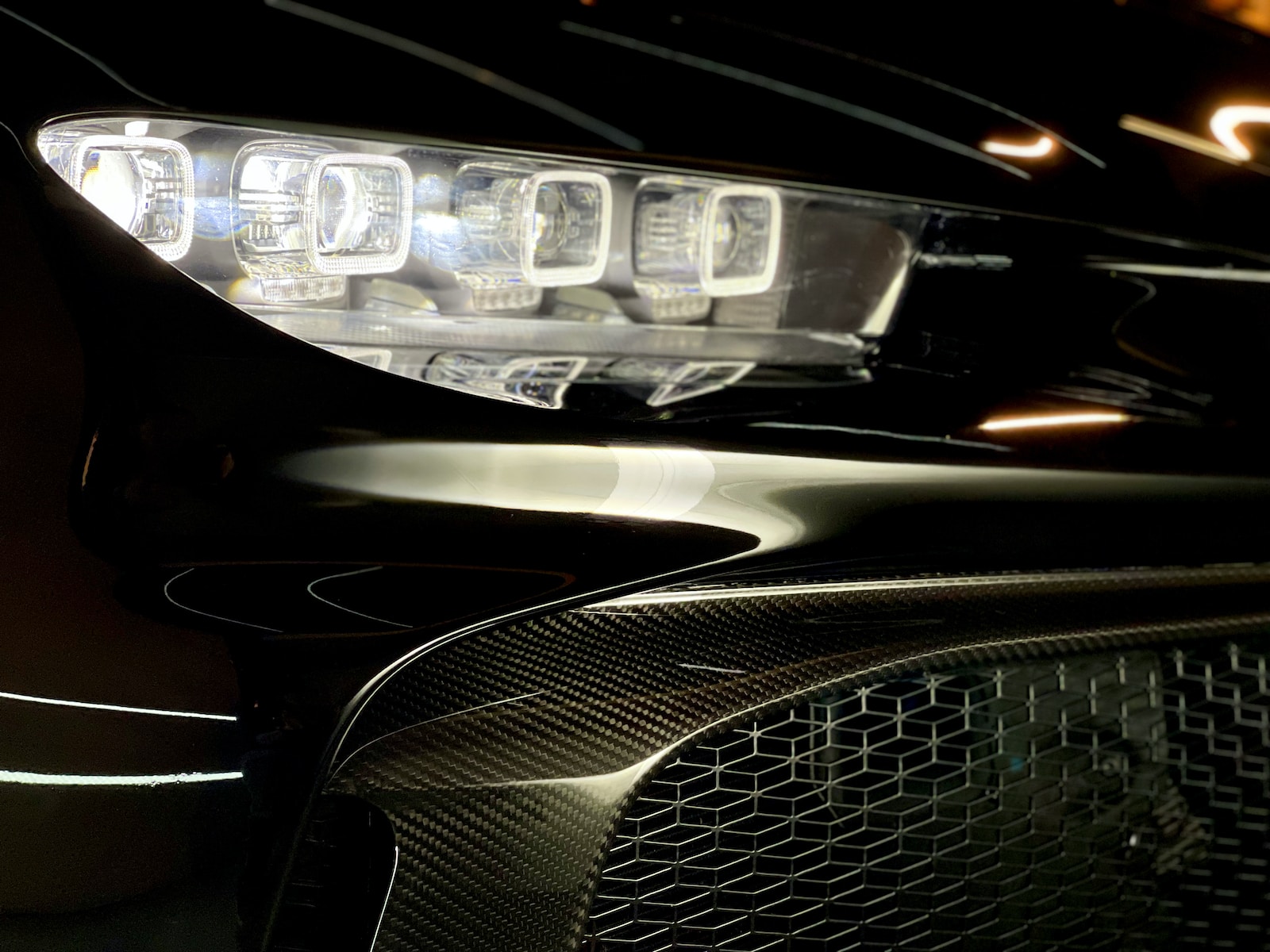Winter driving can be treacherous, particularly if your vehicle is ill-equipped to handle snow, ice, and other challenging road conditions. Choosing the right drivetrain for your vehicle can make all the difference in ensuring you stay safe on the road. In this article, we will explore and compare the performance of front-wheel drive (FWD), rear-wheel drive (RWD), and all-wheel drive (AWD) vehicles in snow conditions, helping you make an informed decision when it comes to winter driving.
Key Takeaways
- Understanding the differences between FWD, RWD, and AWD in snow conditions is crucial in choosing the right vehicle for winter driving.
- FWD vehicles offer enhanced traction and stability in snow, making them a good choice for less severe winter conditions.
- RWD vehicles can be challenging to handle in the snow, but they offer advantages in certain conditions, such as better weight distribution for improved traction.
- AWD vehicles distribute power to all four wheels, providing improved traction and stability in snowy conditions.
- When choosing a vehicle for winter driving, it’s important to consider factors such as traction, handling, and personal preferences to make an informed decision.
Front-Wheel Drive (FWD) in Snow
Snow and ice on the roads can pose significant challenges for drivers, making it necessary to have a vehicle that can handle slick and slippery conditions with confidence. Front-wheel drive (FWD) is an excellent option for winter driving, as it offers several advantages over other drivetrain types.
The primary advantage of FWD in snow is that the engine’s weight is distributed over the front wheels, providing enhanced traction and stability. This means that FWD vehicles are less likely to spin out or lose control on icy or snowy roads, making them a safer option for winter driving.
Another advantage of FWD in snow is that it provides better fuel economy compared to other drivetrain types. Since FWD vehicles are lighter and have fewer moving parts, they require less power to operate. This makes them more efficient, which can save you money on gas during the winter months.
When driving a FWD vehicle in snow, it’s important to keep some tips in mind to maximize its performance. First, maintain a safe speed and avoid sudden movements. Second, keep a safe distance from other vehicles on the road. Third, use winter tires to improve traction and control. By following these tips, you can enjoy a safe and comfortable winter driving experience with your FWD vehicle.
Front-Wheel Drive (FWD) in Snow: Key Advantages
| Advantages of FWD in Snow |
|---|
| Enhanced traction and stability on slick roads |
| Better fuel economy compared to other drivetrain types |
“FWD vehicles are less likely to spin out or lose control on icy or snowy roads, making them a safer option for winter driving.”
Rear-Wheel Drive (RWD) in Snow
Rear-wheel drive (RWD) vehicles can be challenging to handle in snowy conditions, especially when compared to front-wheel drive (FWD) or all-wheel drive (AWD) vehicles. However, RWD vehicles have certain advantages that make them appealing to some drivers.
One of the main benefits of RWD in snow is that it offers better weight distribution than FWD. The engine and transmission sit at the back of the car, which means that the front wheels are lighter and more agile. This can lead to better handling and more precise steering on slippery roads.
However, RWD vehicles are also notorious for their limited traction in snow. The rear wheels are responsible for both propulsion and steering, which can make it difficult to maintain control on icy surfaces. To overcome this, drivers of RWD vehicles should take care to drive smoothly and avoid sudden acceleration or braking.
To improve traction, it’s important to use winter tires, which offer better grip on slippery surfaces than all-season or summer tires. Additionally, adding weight to the rear of the vehicle (such as sandbags or other heavy objects) can help to improve balance and stability.
Techniques to Overcome RWD Challenges in Snow
There are several techniques that drivers of RWD vehicles can use to improve their performance in snow. One such technique is to use a lower gear when driving, as this can help to slow the vehicle down and reduce the risk of slipping. In addition, drivers should try to avoid abrupt changes in direction or speed, as this can cause the vehicle to skid or spin out of control.
When turning, it’s best to slow down before entering the turn and then gradually accelerate out of it. This can help to maintain traction and prevent the wheels from losing grip. Additionally, using the handbrake (also known as the emergency brake) can be effective in slowing down the car on slippery surfaces.
Overall, while RWD vehicles can be challenging to handle in snow, they offer certain advantages that may be appealing to some drivers. With the right technique and equipment, RWD vehicles can be safe and reliable options for winter driving, even in harsh conditions.
All-Wheel Drive (AWD) in Snow
When it comes to snowy and slippery roads, all-wheel drive (AWD) vehicles are considered to be some of the best performers. AWD systems distribute power to all four wheels, providing improved traction and stability on snow and ice. This can be a significant advantage in challenging winter conditions, especially in areas prone to heavy snowfall.
One of the major benefits of AWD in snow is that it allows for better acceleration and handling, even when the road conditions are less than ideal. This is because AWD provides additional grip to all four wheels, resulting in better traction and control. Additionally, AWD can help drivers maintain stability when cornering or making sudden maneuvers, as the system can adjust power delivery to individual wheels as needed.
There are different types of AWD systems, including full-time, part-time, and automatic. Full-time AWD is always on and provides the best traction in snow conditions, while part-time AWD can be disengaged when not needed. Automatic AWD systems work in conjunction with the vehicle’s stability control system, automatically transferring power to the wheels with the most traction.
Overall, AWD systems are an excellent choice for winter driving, as they provide better control and handling on snowy and slippery roads. However, it’s important to note that AWD vehicles are typically more expensive than their FWD or RWD counterparts and can be less fuel efficient. Additionally, AWD systems require regular maintenance to ensure optimal performance.
“If you live in an area with heavy snowfall or frequently encounter slippery road conditions, investing in an AWD vehicle is definitely worth considering.”
FWD vs RWD in Snow
Choosing the right drivetrain is crucial when driving in snowy conditions. Both front-wheel drive (FWD) and rear-wheel drive (RWD) have their pros and cons, making it important to understand their differences.
FWD in Snow: FWD vehicles have an advantage in snowy conditions due to the weight distribution being over the front wheels, providing better traction. FWD also offers better stability and control when driving in a straight line. However, when it comes to cornering, FWD can be less stable due to the front wheels doing both steering and propelling.
RWD in Snow: RWD vehicles have a disadvantage in snowy conditions due to the weight distribution being over the rear wheels, providing less traction. RWD can also be challenging to control and maneuver in snowy conditions due to oversteer. However, RWD can be more advantageous in certain snowy conditions where sudden acceleration is required, such as driving up a hill, due to the weight transfer to the back tires.
Ultimately, the choice between FWD and RWD in snowy conditions depends on personal preference, driving style, and the specific winter driving conditions. When comparing FWD and RWD, it’s important to consider factors such as traction, handling, and safety to make an informed decision for winter driving.
FWD vs AWD in Snow
Choosing the right drivetrain for winter driving can be a daunting task, especially when it comes down to front-wheel drive (FWD) and all-wheel drive (AWD) vehicles. Both drivetrains have their strengths and weaknesses, and it’s important to know the differences to make an informed decision.
Advantages of FWD in Snow
FWD vehicles have the advantage of weight distribution, which allows for better traction and handling on snowy roads. The weight of the engine and transmission rests on top of the drive wheels, providing extra grip to the front tires and making it easier to maintain control in slippery conditions.
Advantages of AWD in Snow
AWD vehicles, on the other hand, can transfer power to all four wheels, providing superior traction and stability in snow and ice. AWD can adjust to changing road conditions and distribute power accordingly, ensuring optimal performance on slippery surfaces.
Trade-Offs between FWD and AWD in Snow
While FWD is generally better suited for less severe winter conditions, AWD can provide extra peace of mind in extreme weather. AWD vehicles tend to be more expensive than their FWD counterparts and may also cost more to maintain. However, the added safety AWD offers may be worth the investment for those who frequently drive in harsh winter conditions.
When considering FWD vs AWD in snow, it’s important to take personal preferences and needs into account. If you live in an area with long, snowy winters or frequently drive on unpaved roads, AWD may be the better choice for you. However, if you only drive in occasional light snow, a FWD vehicle may be a more cost-effective option.
RWD vs AWD in Snow
When it comes to winter driving, choosing between rear-wheel drive (RWD) and all-wheel drive (AWD) can be a tough decision. Both have their advantages and disadvantages, and the choice ultimately depends on personal preferences, driving needs, and snow conditions.
RWD in Snow
RWD vehicles are known for their sporty handling and precise steering, but when it comes to snowy and icy roads, they can be challenging to control. RWD cars and trucks lack the all-wheel grip that helps maintain control in low-traction situations, and they are prone to fishtailing and spinning out on slippery surfaces.
AWD in Snow
On the other hand, AWD vehicles are designed to provide better traction and stability on snow and ice. An AWD system distributes power to all four wheels, allowing for more even weight distribution and better grip on the road. AWD is especially helpful when driving up hills, navigating slippery turns, and in heavy snowfall.
Comparing RWD and AWD in Snow
So, which is better for snow driving: RWD or AWD? The answer is not straightforward. While AWD offers superior traction and control, it comes with a higher price tag and may add weight to the vehicle, affecting fuel efficiency. RWD, on the other hand, may be more affordable and provide better performance in dry and cold conditions.
When comparing RWD and AWD, consider the following:
- Driving needs: Are you driving on flat or hilly terrain? Do you need to navigate through deep snow or slush?
- Budget: AWD systems are more expensive than RWD.
- Fuel efficiency: AWD systems may add weight to the vehicle and reduce fuel economy.
Conclusion
Ultimately, the decision between RWD and AWD in snow comes down to individual preferences and budget. AWD systems provide better traction and stability in harsh winter conditions, but they come with a higher cost. RWD may be more affordable and perform well in dry and cold conditions, but they are less effective on snowy and icy roads. It’s important to consider the driving needs and conditions before making a decision.
Conclusion
Winter driving can be challenging, but choosing the right drivetrain can make all the difference. As this article has shown, the three main types of drivetrains – front-wheel drive, rear-wheel drive, and all-wheel drive – have distinct advantages and limitations when it comes to handling snowy conditions.
In general, front-wheel drive vehicles are a safe and reliable choice for light snow and icy conditions, thanks to their enhanced traction and stability. Rear-wheel drive vehicles, on the other hand, are better suited to deep snow and off-road conditions, but require more skill and caution to handle safely in snow.
All-wheel drive vehicles offer the best of both worlds, with improved traction and stability compared to FWD or RWD vehicles. However, it’s important to note that not all AWD systems are created equal, and some may perform better than others in snowy conditions.
Factors to Consider
Ultimately, the best drivetrain for winter driving depends on a variety of factors, including driving habits, personal preferences, and the specific snow conditions you are likely to encounter. Some additional factors to consider include:
- The type of tires on your vehicle: Winter tires can significantly improve traction in snow and icy conditions.
- The weight of your vehicle: Heavier vehicles tend to perform better in snow, as they provide more downward force and therefore better traction.
- Your skill level and driving experience: Some drivetrains, such as RWD, require more skill and experience to handle safely in snow.
When choosing a vehicle for winter driving, it’s important to weigh all of these factors and consider what is most important to you. Whether you opt for FWD, RWD, or AWD, taking the time to prepare your vehicle and adjust your driving habits can help ensure a safe and enjoyable winter driving experience.
FAQ
Q: What is the difference between FWD, RWD, and AWD in snow conditions?
A: Front-wheel drive (FWD) vehicles have power sent to the front wheels, rear-wheel drive (RWD) vehicles have power sent to the rear wheels, and all-wheel drive (AWD) vehicles have power sent to all four wheels. The main difference in snow conditions is how each drivetrain handles traction, stability, and maneuverability.
Q: How does front-wheel drive (FWD) perform in the snow?
A: FWD vehicles generally perform well in the snow due to the weight of the engine being over the drive wheels, which provides increased traction. FWD vehicles offer better control and stability on slippery surfaces, making them a popular choice for winter driving.
Q: What are the advantages of rear-wheel drive (RWD) in snow?
A: Rear-wheel drive vehicles can struggle in the snow due to less weight over the drive wheels, which can result in reduced traction. However, RWD vehicles tend to provide better handling and control in certain snow conditions with proper techniques and equipment, making them a viable option for winter driving.
Q: How does all-wheel drive (AWD) perform in snowy conditions?
A: AWD vehicles offer superior traction and stability in the snow, as power is distributed to all four wheels. This enhances control and maneuverability, making AWD a popular choice for winter driving. However, it’s important to note that not all AWD systems are created equal, and performance can vary depending on the specific vehicle and system.
Q: What are the key differences between front-wheel drive (FWD) and rear-wheel drive (RWD) in the snow?
A: FWD vehicles provide better traction and stability in the snow due to weight distribution, while RWD vehicles can struggle with traction. FWD offers better control, while RWD offers better handling in certain snow conditions. Ultimately, the choice between FWD and RWD depends on individual preferences and specific winter driving needs.
Q: How does front-wheel drive (FWD) compare to all-wheel drive (AWD) in snow?
A: FWD vehicles have good traction and stability in the snow, but AWD vehicles provide even better performance due to power being sent to all four wheels. AWD offers enhanced control and maneuverability, making it an attractive option for winter driving. However, AWD systems and capabilities can vary, so it’s important to consider the specific vehicle and system when making a decision.
Q: What are the advantages and limitations of rear-wheel drive (RWD) compared to all-wheel drive (AWD) in snowy conditions?
A: RWD vehicles may struggle with traction in the snow, but they offer better handling and control in certain conditions. AWD vehicles provide superior traction and stability, making them a more reliable option for winter driving. However, AWD systems can vary in performance, and additional factors such as vehicle weight and tires can also impact overall snow performance.
 Skip to main content
Skip to main content


